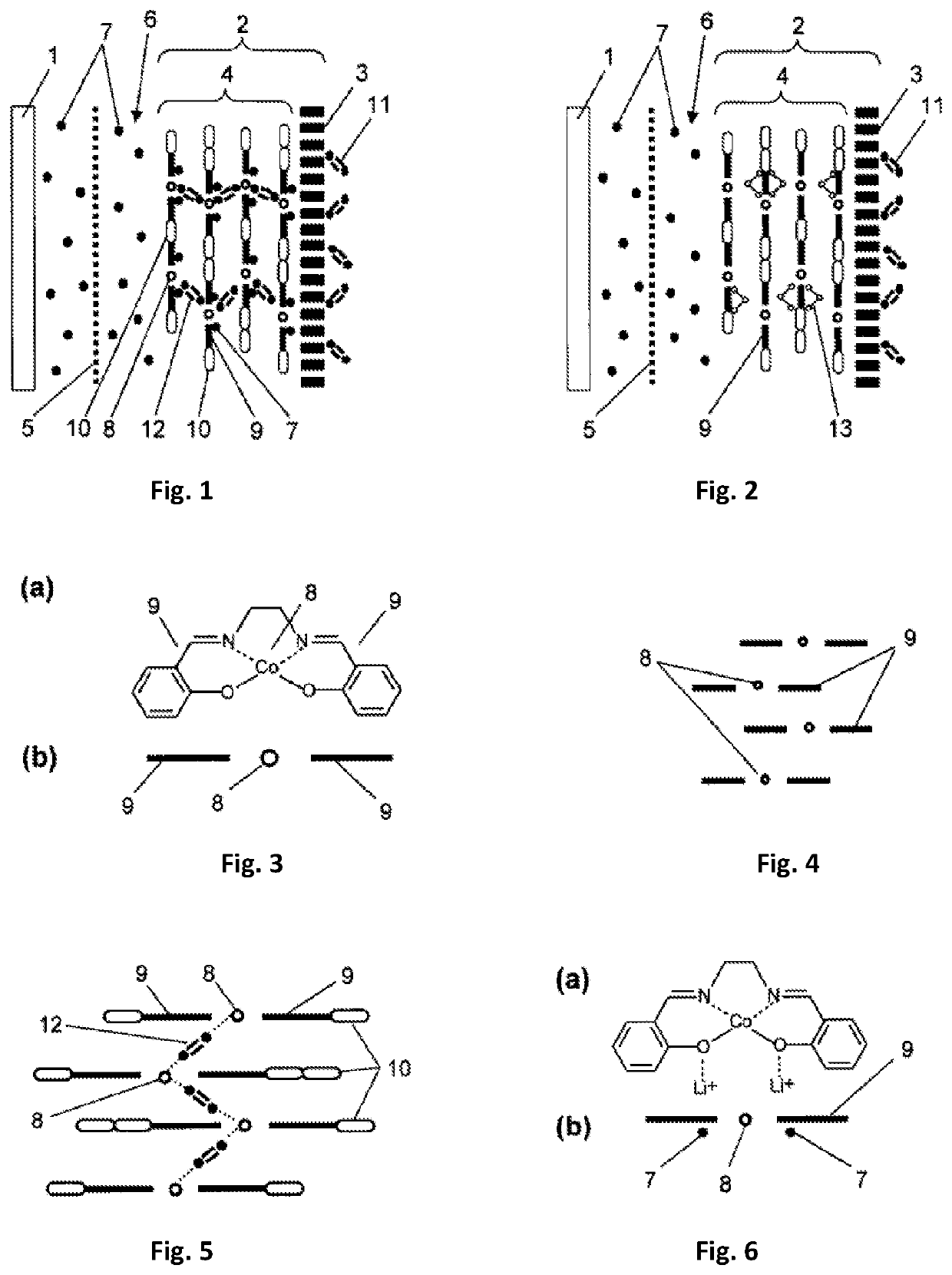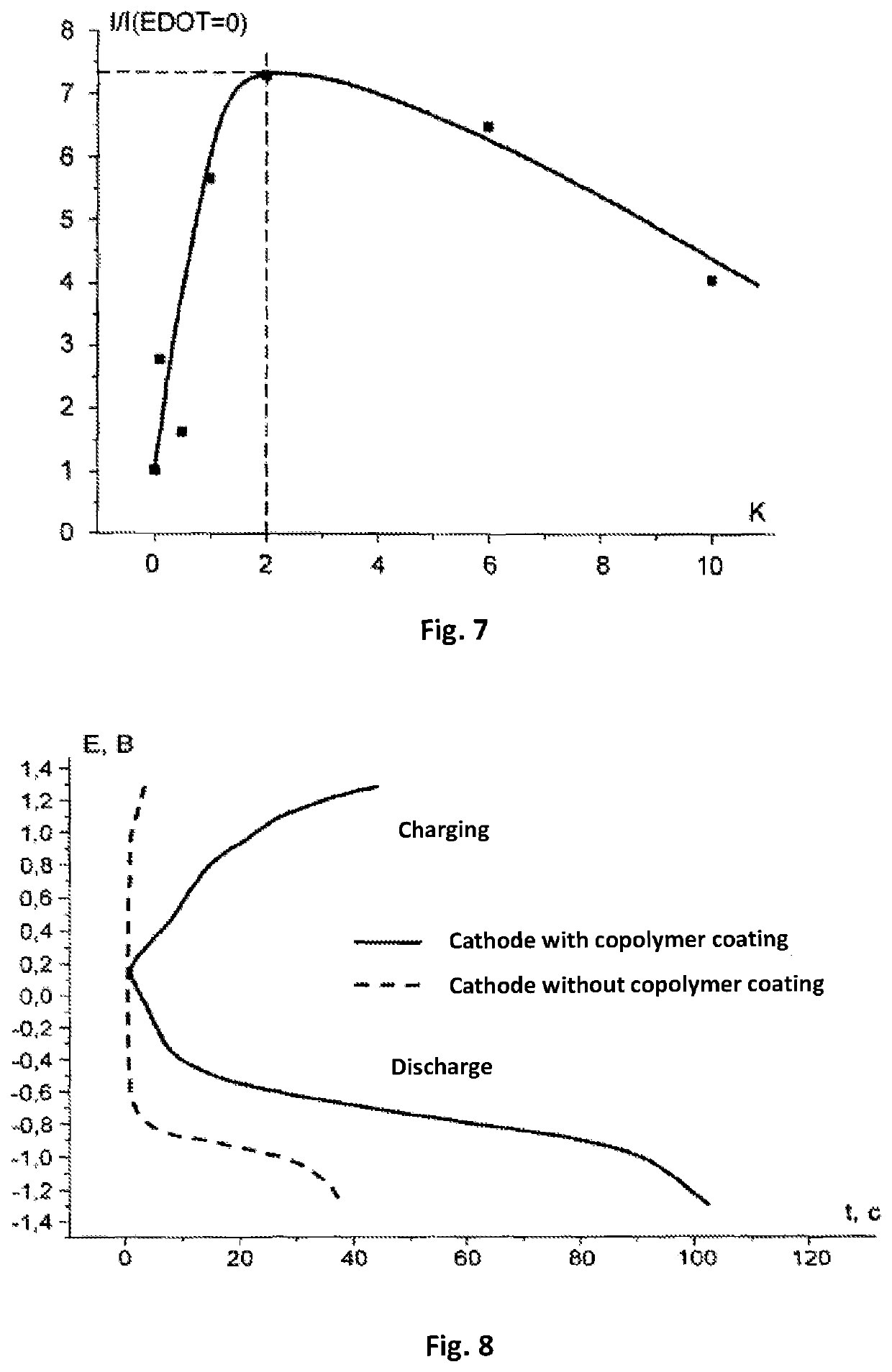Cathode for metal-air current sources metal-air current sources containing the same
a technology of metal air current and cathode, which is applied in the direction of active material electrodes, cell components, basic electric elements, etc., can solve the problems of catalyst not providing the desired high operating performance of a current source, significantly increasing the cost of electrodes and also the current source, and noticeably reducing the efficiency of catalysts from one charge-discharge cycle to the nex
- Summary
- Abstract
- Description
- Claims
- Application Information
AI Technical Summary
Benefits of technology
Problems solved by technology
Method used
Image
Examples
example 1
scharge Process of an Electrode with a Copolymer Coating
[0081]Production of an electrode. As a base for the electrode, there was selected a glass-graphite disk with a diameter of 22 mm (surface area 0.07 cm2) produced by the company BASi (MF 2012). To the working surface of the electrode, using the method of electrochemical polymerization, there was applied copolymer from an acetonitrile solution containing 1×10−3 mol / L of a monomer of complex compound of cobalt with Schiff base [Co(CH3O-Salen)], 2×10−3 mol / L of EDOT and 0.1 mol / L of background electrolyte tetraflouroborate tetraethylammonium (C2H5)4NBF4. The polymerization was carried out in an airtight case filled with argon with a total concentration of water and oxygen of less than 10%. The process comprised two cycles of changing the potential of the electrode in a range from 0 V to +1.5 V with respect to the silver-silver chloride electrode with a velocity of 400 mV / sec. After the end of the process of polymerization, the elec...
example 2
and Discharge of a Lithium-Air Current Source
[0086]Production of the electrodes and current source. In the production of the cathode, carbon material (of the brand Super P produced by the company TIMCAL) 80% by mass and a binding agent—polyvinylidene fluoride (of the brand HSV 900 produced by the company Arkema)—20% by mass were mixed in a solvent N-methyl-2-pyrrolidone (produced by the company Sigma-Aldrich). The mass obtained was uniformly applied on to Toray-30 gas-permeable carbon paper (Toray Carbon Paper TGP-H-030) and the preparation was subjected to drying for 12 hours at a temperature 120° C. to remove the residues of the solvent. The density of the application of carbon on the obtained base of the electrode was (0.9±0.1) mg / cm2. Then, onto the base of the cathode that was obtained in this way, there was applied a coating made of a copolymer.
[0087]The process of application was carried in an airtight case filed with argon and with a total concentration of water and oxygen o...
PUM
| Property | Measurement | Unit |
|---|---|---|
| molar ratio | aaaaa | aaaaa |
| molar ratio | aaaaa | aaaaa |
| EMF | aaaaa | aaaaa |
Abstract
Description
Claims
Application Information
 Login to View More
Login to View More - R&D
- Intellectual Property
- Life Sciences
- Materials
- Tech Scout
- Unparalleled Data Quality
- Higher Quality Content
- 60% Fewer Hallucinations
Browse by: Latest US Patents, China's latest patents, Technical Efficacy Thesaurus, Application Domain, Technology Topic, Popular Technical Reports.
© 2025 PatSnap. All rights reserved.Legal|Privacy policy|Modern Slavery Act Transparency Statement|Sitemap|About US| Contact US: help@patsnap.com



